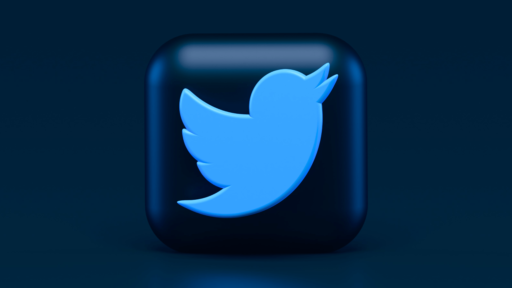Content marketing doesn’t end when you hit ‘publish’. It’s only the start of the journey.
Next step is content promotion. Because you need to make sure your target audience sees it. And that’ll help your piece of content rise up the SERPs (search engine results pages).
There are plenty of platforms to help you with this. Some are free. Some are paid. But it takes money to save time in digital marketing.
So, let’s look at 3 paid content distribution strategies that take the pressure off:
Which content distribution channels are bloggers using?
Bloggers don’t just expect people to find their content. They need to give it a push. So, these are the main content distribution platforms they use:
- Social media platforms
- SEO (search engine optimization)
- Email marketing
- Influencer collaboration/outreach
- Paid services

Source: Orbit Media
One of the main reasons companies use social media is brand awareness. But for driving traffic, it’s least effective. Paid services are the least popular method. But end up being the most effective. Go figure.
For brands with a budget, Google PPC (pay-per-click) ads are a go-to paid content distribution tactic. Because over 90% of searches happen there.

Source: Oberlo
But you’ve gotta keep on top of search ads. Else you’ll quickly go over budget.
The CPC (cost-per-click) will also widely vary. So, you’ll need at least $1k for search engine marketing. Because you’ll want to test variations.
Some businesses don’t have that kinda cash. So, let’s focus on 3 less-used options. That each allow you to set and forget.
Get hundreds of social shares
Shares are one of the most important social signals to track. But they aren’t a direct SEO ranking factor. So, why should you care about them?
Well, they do impact one of the biggest we know about. Backlinks.
Social media is one of the most popular ways to promote content. But organic reach is hard. Even for high-quality content creation. That’s why people use paid options like:
- Facebook ads
- Instagram Stories
- LinkedIn InMail
- Quora ads
But none of these guarantee social shares. So, you need a paid content distribution strategy that can. Enter: Quuu Promote. Your new content marketing strategy bestie.
QP helps you promote content in a few clicks. Then gets you hundreds of shares from people in your niche.
Quuu users sign up to receive curated content from topics they choose. And guess where most of it comes from? Bingo. The content you promote.

Source: Quuu
It’s a big happy cycle that works with Facebook, Twitter, and LinkedIn. Most of our Quuu users have the process automated. So, we send them your new content. And it’s automatically shared via schedulers to their social platforms.
Just add your RSS feed. And Quuu Promote will do the rest. Or share each link manually by choosing your post type. Then the most relevant interest category. And away you go.

Source: Quuu Promote
After that, watch the shares roll in. And don’t forget to interact when you’re tagged on Twitter. Facebook and LinkedIn are harder to track because of privacy settings.

Source: Quuu
Social media engagement is so important for growing an audience. And if you want it on your content, you’ve gotta give it. So, don’t forget this important step in your distribution plan.
Sponsor all types of content
When you think of “sponsorship”, you probably think of ads on the side of football pitches. But it’s part of the digital world too. And it’s an underused paid content distribution strategy.
It isn’t just for B2C businesses either. B2B marketers can get involved too. You can sponsor things like:
- Whitepapers
- Case studies
- Guest posts
- Infographics
- Articles and blog posts

Source: Huffington Post
When done right, it’s an awesome lead generation tactic. And there are a few more interesting ways to get involved:
- Influencer marketing
- Email newsletter
- Podcasts & webinars
Influencer marketing
Partnering with content creators in your niche can build trust in your brand. It’s now the digital form of word-of-mouth marketing. The right kind of post can really resonate with your target audience. And it shows the influencer trusts your brand. Which is great social proof too.
Just pick your partner and platform carefully. Remember, bigger isn’t always better. Nano and micro-influencers have much smaller audiences. But their engagement rates are highest. They’ll also be cheaper to work with.

Source: Later
Research who’s relevant. And who’s within budget. Check out apps like BuzzSumo to find your perfect match. Then reach out.
Email newsletter
Email is one of the best content marketing channels. Because what you create isn’t owned by another company that could delete your content and audience for no reason. (Hey, Facebook.) And sponsorship is pretty simple.
The Marketing Examples newsletter always includes a sponsor at the top. But it’s written by creator Harry Dry in his tone of voice.

Most sites will say if they accept sponsorships. But that doesn’t stop you getting in touch with ones that don’t.
My final tip? Like influencer marketing, it’s best to let the writer have creative control. They know their audience. And how best to relay your product or service to them. So, trust them. And their readers are more likely to trust you.
Podcasts and webinars
Podcast advertising is on the rise. Take the most popular podcast on the planet—The Joe Rogan Experience. But Joe only takes sponsorship from brands he uses or endorses.
He’ll talk about the product for a bit. And how it fits into his life. Then usually gives his listeners a discount code. This way, it feels more like a suggestion from a friend than an ad.

Source: GIPHY
Start by searching for podcasts in your industry. Listen to a few. Make sure they’re credible. Do they mention sponsors? Does their target audience match yours? If so, get in touch through their site or social media channels.
Here’s a template to help:

Source: HubSpot
You can use this tactic for webinars too. It’s not the most popular paid content distribution strategy. But as video content gets more important, it’s best to jump onboard early.
Blend into content with native ads
Ad blindness is very real. People have gotten used to skipping over areas where ads usually hang out.
Native advertising isn’t like social media ads. Those are designed to stand out. While native ad formats try to blend in. Here’s where Outbrain can help.
It won’t randomly break up social network feeds. It’ll place your content in a relevant article, publication, or landing page. And it won’t look out of place. So you’re hopefully targeting the right audience at the right time.

Source: Disruptive
Obviously, you need to know your target customer before this. (Creating customer persona templates can help.) Then these display ads are hyper-relevant.
They’re also inoffensive. So, it’s more likely the reader will convert. They can also hit those demographics who aren’t on social media channels. It’s for both advertisers and publishers. Because publishers can monetize content by allowing paid ads.
There are tons of high-profile sites that use it. Big media names like CNN, the Guardian, and the BBC. So, you’ll have lots of distribution networks.
Disruptive explained it well:
“People might scroll past your ad on Facebook without thinking twice, but if they’re actively reading content on a major news site, they might be in a better mindsight to read the content that you’re promoting, too.”
There are 4 simple steps to follow:
- Choose great content
- Submit to Outbrain
- Links appear on publisher sites
- Drive traffic back to your site

Source: dapa
It’s an easy way of getting your content in front of a new audience. But one that’s already interested in a related subject. If you’re not finding much success with a piece of content, try repurposing it. A different format could perform much better.
Conclusion
Promoting content means you won’t have wasted time making it. There’s too much being shared online these days. So, you need to encourage people to read, listen, or watch. Just get it in front of them somehow.
Paid content distribution is a shortcut. It’s an easier way to reach relevant audiences. But like most shortcuts, it ain’t free. Either you spend time. Or you spend money. That’s the trade-off.
It can work alongside organic promotion too. That’s the ideal formula. But if you’re too busy for that, it’s a great way of making sure your target customer knows about you.
What other paid content distribution strategies do you use? Have you tried any from this list? Let us know in the comments below.





